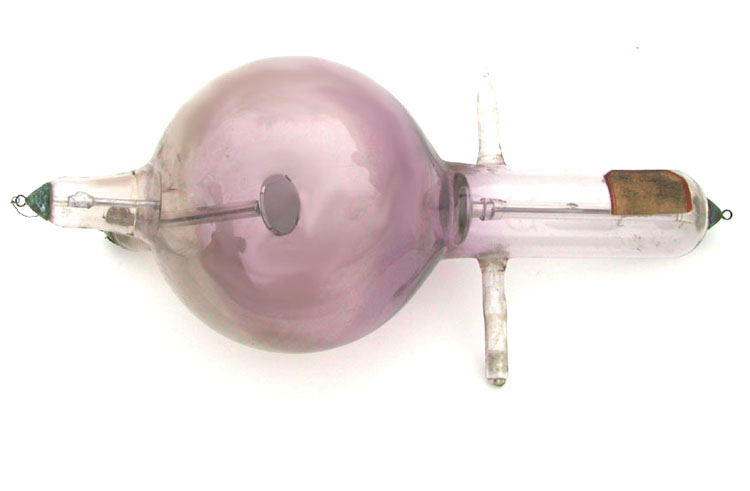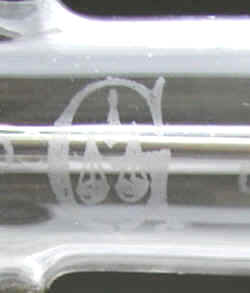Gundelach Light Anode Tube (ca. 1900)

What we have here is a very simple (and early) bi-anode tube manufactured by the famous Emil Gundelach company of Gehlberg Germany.
The circular platinum target (anticathode) is in the center of the bulb, and as seen in the photo, the cupped aluminum cathode is positioned just inside the glass arm connected to the right side of the bulb. The anode, a thin flat aluminum disk, is located where the short glass arm is connected to the left side of the bulb. It is hard to make out because only its edge is visible.
This type of tube had no specific application—it could have been used either in diagnostic imaging or therapy.

When the gas pressure inside the tube had gone too low (a hardened tube), the pressure was increased by applying a flame to the small (ca. 2" long) tube extending from the bottom of the glass arm surrounding the cathode. The heat caused a chemical at the tip of the tube to release a small quantity of gas. This is a similar, but fundamentally different, type of regulation than that used by the other Gundelach tubes in the collection. The latter's osmo-regulation approach involved the heating of a hollow platinum tube/capillary.
William Crookes may have used this type of regulation before the discovery of X-rays. According to Freund (1904) "Crookes varied the tube vacuum by means of a piece of caustic potash in a side-chamber. This absorbs the last traces of moisture left within the tube, thus raising the vacuum. On heating the potash, however, a certain amount of of vapor becomes liberated, whereby the vacuum can be lowered."
The beautiful purple color is due to the X-ray energy that was absorbed by the glass, something that changed the energy state of the electrons associated with certain components of the glass. This affected the absorption spectrum and produced the purple color. For other examples of materials that were colored by radiation, check out the collection's Lichtenberg Figures, Glass and Gemstones section.
The Gundelach company was founded in 1852 by Emil Gundelach, a glass blower. Initially, they offered a variety of Crookes and Geissler tubes. As a result, they were in excellent shape when the time came to begin manufacturing tubes specialized for X-ray production. In fact, they began doing so within a few month's of Rontgen's discovery. They continued producing X-ray tubes until the late 1920s.
The company logo, a scale hanging from the inside of a large "G," can be seen etched on the stem of the tube (see photo above right).
Size: Approximately 10.5" long with 4.5" bulb diameter
Kindly donated by Bill Kolb.
Reference
Freund, L. Elements of General Radiotherapy for Practitioners. 1904.
